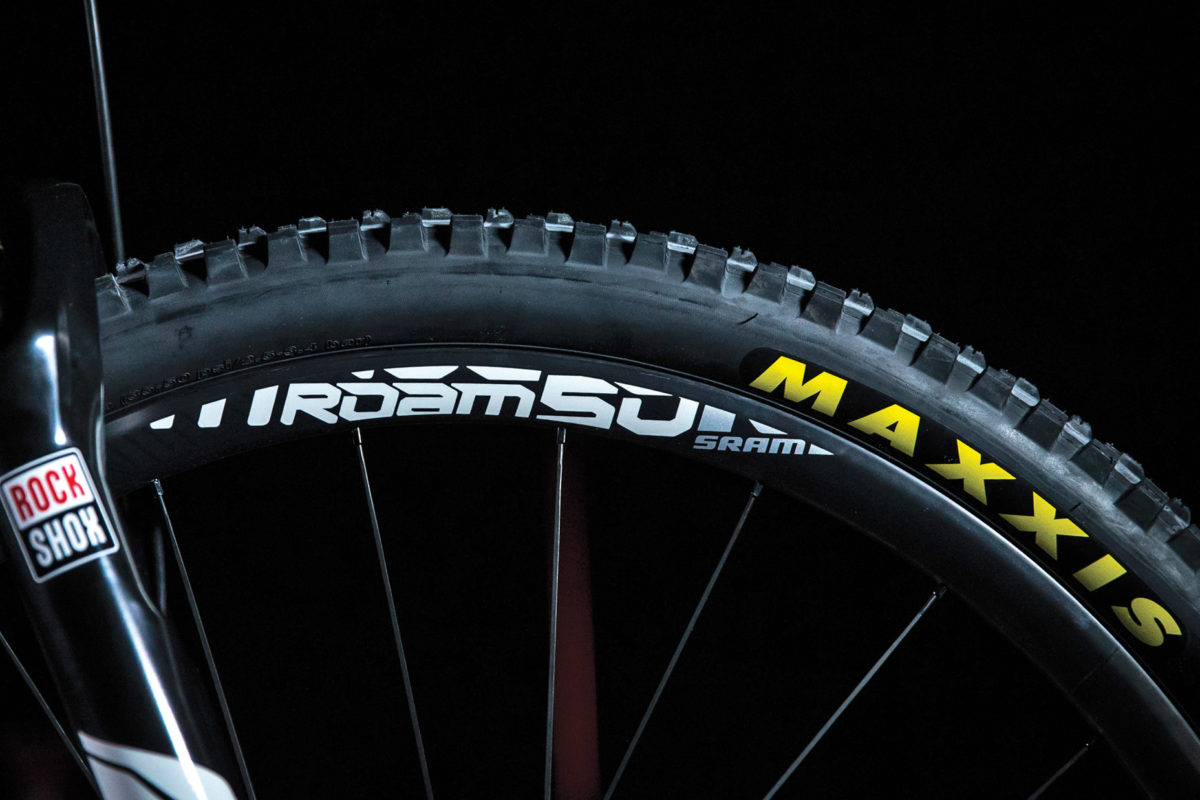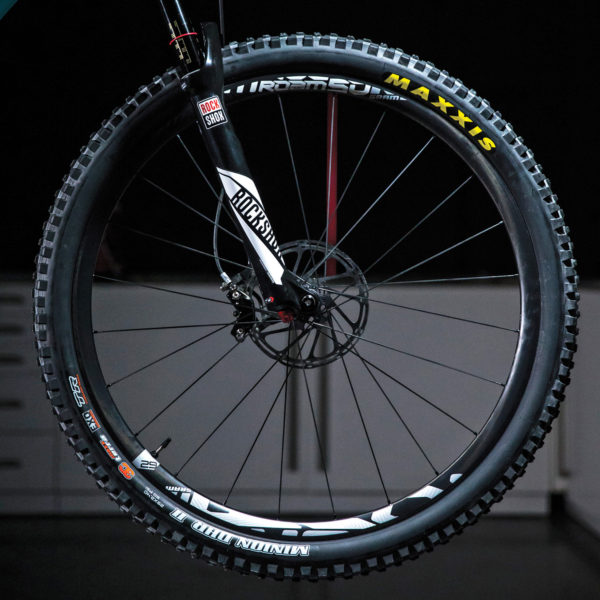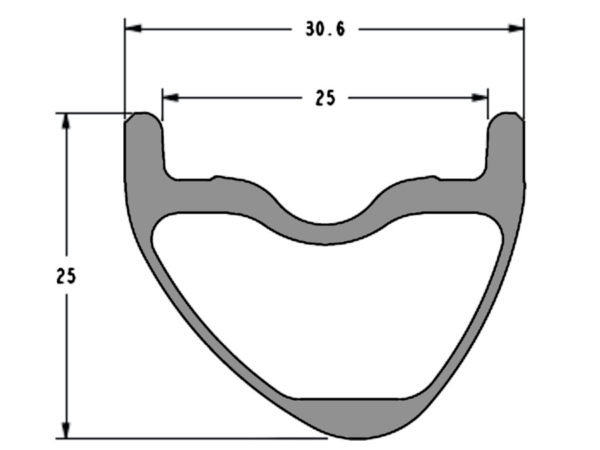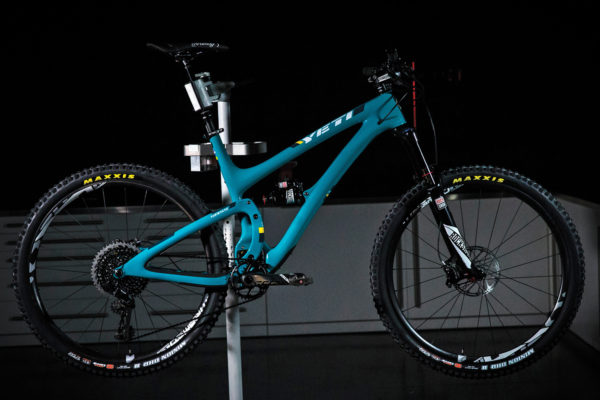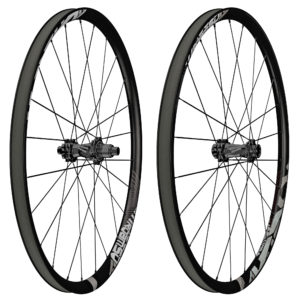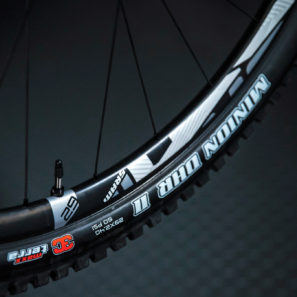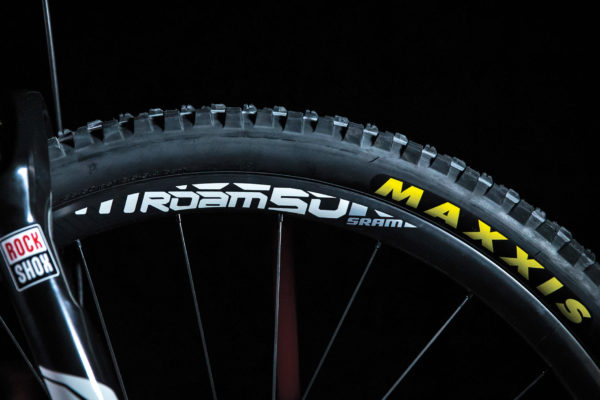
SRAM’s Roam mountain bike wheels have developed over the past few years into a value-packed line up offering a balance of light weight, stiffness, and durability that has given them traction for both aggressive cross country and trail riding. Now with new Roam 50 Carbon wheels, SRAM is bringing top-level carbon tech down by more than 30% in price so more regular mountain bikers can afford the benefits of riding wider-profile hookless carbon rims. Trail riding versatility has been the hallmark of the Roam line-up, and now their carbon offerings will be within reach for more riders…
SRAM calls the new Roam 50 their ‘everyday carbon champ’, and really sees them as the first chance to offer an all-around carbon 29er trail riding wheelset that more mountain bikers can actually afford. The heart of the wheels is the new asymmetric hookless bead, tubeless rim profile. It gets a 25mm internal width, 30.6mm external, and a smoothly rounded shape 25mm deep overall. Those matte UD carbon rims are laced up with 24 bladed, double-butted spokes 2x front & rear with external alloy nipples.
Built around the same fast engaging 52-point Double Time hubs, tool free & symmetric axle endcaps (Side Swap), and asymmetric rim shape & lacing that means one spoke length for the entire wheelset (Solo Spoke) as the Roam 60s, the new wheels offer top performance at more affordable pricing. SRAM also includes six different color sticker packs with the wheels so you can get all matchy-matchy with your bike’s color scheme: red, blue, green, yellow, orange, & red-orange.
The wheels are available in Boost or standard spacing for thru-axles or QRs, and with either their own XD driver or a Shimano cassette body.
The Roam 50 Carbons are actually a surprising deal when you look at the numbers. Available only in a 29er option (the carbon Roam 60 is exclusively 27.5 and will remain the only carbon option for the smaller wheels and their more aggressive riding style for the time being), the wheels claim weights of 765g/890g front & rear for a total wheelset weight of 1655g. That makes them an all-purpose XC & trail mountain bike wheelset, and SRAM recommends them for a max 140mm travel bike to stay within that style of riding. But still, that’s only a 30g penalty over the smaller diameter Roam 60s (with the same internal width) that targets a bit more of the longer travel riding that the 27.5 wheel tends to move towards.
At the same time as coming down in weight, their price drops to $600/$700 (€653€/€763 & £554/£646) for the front/rear wheels which are sold independently. That’s more than 30% less than the $900/$1000 list price for the Roam 60s introduced last winter. From a value perspective these 29er-only wheels look like a big improvement for the average mountain biker.
Sure $1300 for a wheelset isn’t cheap, but it looks like only about $300 premium over the current previous generation aluminum Roam 50 wheels. If your budget isn’t quite there yet, the alloy Roam 50s look like they will carry over will not continue on in the 2017 lineup, so act fast to pick up those still available from current stock in 26″, 27.5″ & 29″ varieties with their 21mm internal rim width, a bit lighter weights than the carbon wheels, but a drop in stiffness.
But if you are looking for a new set of responsive 29er wheels, the new Roam 50 Carbons look like one of the best values we’ve seen from any of the big companies for everyday carbon trail riding wheels, and are designed and manufactured entirely in-house by SRAM. In time to get you riding soon, the new wheels are apparently already available through your local shop & regular distribution chains now that they have been officially announced.
